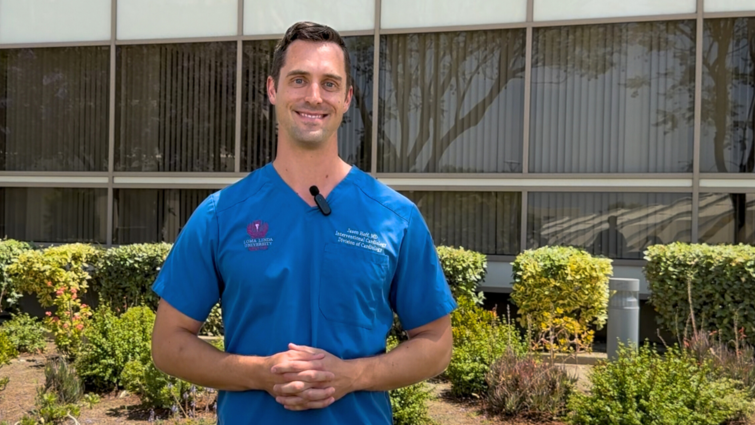Heart Disease Mortality Is Down, but Other Heart-Related Deaths Are Up
Loma Linda’s Jason Hoff discusses the trend and suggests steps to counter it.
August 6, 2025 | Loma Linda, California, United States | Alyssa Hunt, Loma Linda University News
A recent study from the American Heart Association revealed a major shift in cardiovascular disease-related deaths. While overall deaths from heart attacks have declined over the past 50 years, deaths from such heart conditions as heart failure, arrhythmias, and hypertensive heart disease are on the rise, particularly among younger adults and women.
Jason Hoff, structural interventional cardiologist and assistant professor of medicine at Loma Linda University Health, acknowledges that while the decrease in deaths from heart attacks is encouraging, the research shows that a rise in heart-related deaths from other conditions is concerning.

Maintaining a healthy lifestyle is still the best way to prevent heart disease, says Jason Hoff, structural interventional cardiologist and assistant professor of medicine at Loma Linda University Health. [Photo: Loma Linda University Health News]
While the research provides a level of hope, it also underscores how critical early prevention and public education are in improving heart health.
Progress Among Concern
The good news is that efforts in emergency responses and acute care are working. Hoff emphasizes that public awareness campaigns have improved prehospital care, while access to medications that manage cholesterol, blood pressure, and clotting has played a valuable role in reducing deaths from heart attacks.
“These gains show that when we invest in prevention, education, and access to care, we can make a real difference,” Hoff says.
However, the rise in other forms of heart disease, such as heart failure, arrhythmias, and hypertensive heart disease, is alarming.
These conditions develop gradually and may not present symptoms until they’re dangerously advanced, which makes early detection harder and the end result deadlier.
Hoff explains that these trends may also point to broader gaps in long-term care and follow-up, especially in underserved communities. “Research suggests young adults and women are particularly at risk, which means we need to do more to identify risks earlier, provide targeted education, and ensure that warning signs are caught early,” he explains.
From Heart Attacks to Heart Disease
While the medical field is doing a better job at saving people from heart attacks, many of those individuals are at risk of developing heart failure or arrhythmias after their survival.
Additional lifestyle-related risk factors, such as obesity, diabetes, high blood pressure, and low levels of physical activity, have also become more common. While these are not guaranteed to cause heart attacks, they can often lead to other forms of heart disease that are just as serious.
Finally, there may also be delays in diagnosis or a lack of long-term follow-up. Reducing heart disease deaths is not just about what happens inside the hospital, but how people live every day outside of it.
“Prevention is not just about stopping the first event. It’s about long-term heart health,” Hoff says.
Practical Steps for Heart Health
Maintaining heart health requires consistency. Hoff says that the following fundamentals are proven and powerful, including moving your body, or aiming for 150 minutes of moderate exercise per week. “Even walking counts,” he says.
He also calls to eat mindfully. “Prioritize whole foods, such as vegetables, fruits, whole grains, lean proteins, nuts, and healthy fats. Avoid processed foods, sugary drinks, and excess salt.” Sleeping well is another important item, because quality sleep is essential for regulating blood pressure, metabolism, and inflammation.
Hoff also reminds patients the importance of managing stress, since chronic stress can raise blood pressure and disrupt heart rhythms. “Mindfulness, connection, and purpose all help with stress management,” he says. It’s also important to “know your numbers,” that is to say, “track your blood pressure, cholesterol, blood sugar, and weight for signs of early detection.”
Finally, he says that people need to avoid tobacco and alcohol. “Quitting smoking and avoiding alcohol are two of the most impactful steps an individual can take for their heart health,” he says. “Heart disease is often not loud or obvious. It builds quietly over time and often strikes when it’s too late. Don’t wait for a health scare—take your heart seriously. Small, intentional choices can be more powerful than any single medical procedure. It’s never too early or too late to begin.”
The original version of this story was posted on the Loma Linda University Health news site.